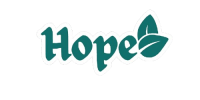If you are living with HIV, it is important to know that you are at higher risk of developing tuberculosis (TB), which can occur before starting HIV treatment or during treatment. Managing both TB and HIV together requires careful coordination, ideally at the same clinic with the same healthcare team. This approach helps ensure you receive the right medicines, monitoring, and support all in one place.
If you are worried about TB symptoms while living with HIV, you can get personalised guidance from licensed doctors through Hope Plus to start care early and reduce risks.
Co-managing TB and HIV can be complex because some HIV and TB medicines interact with each other, and taking multiple medications at once can lead to side effects or make adherence challenging. Sometimes, your immune system may react strongly when starting HIV treatment while on TB treatment, which can also affect how you feel.
When to Start HIV Treatment with TB
Everyone diagnosed with both TB and HIV should start antiretroviral therapy (ART), regardless of how advanced their HIV is. The timing of HIV treatment depends on whether TB was diagnosed before or after starting ART:
- If you are diagnosed with TB first: Start TB treatment immediately, and begin ART two weeks later.
- If you are already on ART and then diagnosed with TB: Start TB treatment immediately, and your ART regimen may need adjustment as guided by your healthcare provider.
Recommended HIV Medicines for Patients on TB Treatment
Your HIV treatment plan may vary depending on your age and whether you are pregnant, breastfeeding, or a child:
ART-Naive Patients Starting TB Treatment:
- Adults, adolescents, and pregnant or breastfeeding women: TDF + 3TC + EFV
- Children 3–12 years: ABC + 3TC + EFV
- Children 0–3 years: ABC + 3TC + AZT
Patients Already on ART Starting TB Treatment:
- Adults, adolescents, pregnant or breastfeeding women:
- On EFV-based regimens: continue, or switch to twice-daily DTG if needed
- On NVP-based regimens: switch to EFV or DTG if EFV cannot be used
- On LPV/r or ATV/r: continue same regimen; ATV/r may require rifabutin instead of rifampicin for TB treatment
- Children 3–12 years: similar substitutions as adults depending on current regimen
- Children 0–3 years: triple NRTI regimen (ABC + 3TC + AZT) may be used
Second-line HIV treatments may need extra adjustments if you are on protease inhibitors and rifampicin. Your healthcare team will monitor you closely to ensure treatment is safe and effective.
Preventing TB in People Living with HIV
Prevention is a key part of care:
- BCG vaccination at birth protects children against severe TB. If delayed, it should be avoided in children with symptomatic HIV.
- Isoniazid Preventive Therapy (IPT) can reduce the risk of developing active TB, particularly for those living with HIV.
By staying on your HIV medicines, attending regular clinic visits, and following the preventive steps above, you can significantly reduce the risk of TB and maintain better overall health. For personalised support, early diagnosis, and safe treatment plans, you can access licensed doctors through Hope Plus.


